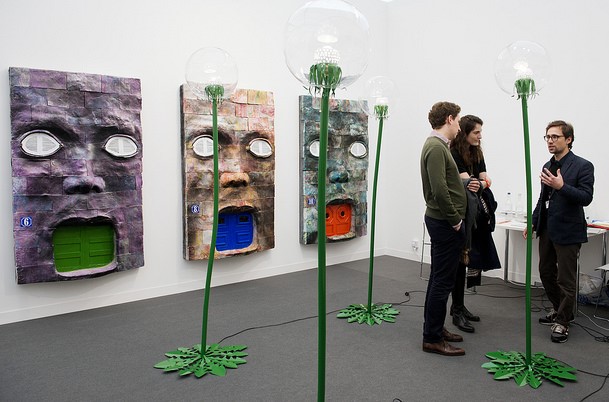The lucrative London art market remains the most attractive art capital in Europe and expects to retain that position in spite of Brexit.
The UK, with London as its core, accounts for 21 per cent of the world’s art sales, compared with 6 per cent in France and 2 per cent in Germany, The European Fine Art Foundation (TEFAF) said in a report published in March.
Uncertainty over the future impact of Britain leaving the European Union has raised concerns among some art experts, but Anthony Browne, chairman of the British Art Market Federation (BAMF) says it has been “business as usual” since the referendum result.
Art experts – including Victoria Siddall , Director of Frieze Fairs, and the BAMF’s Anthony Browne , believe that the UK’s main trading partners in the art market are to be found outside Europe, as art sales are generally concluded on a global scale.
“While the EU is the main trading partner for many other sectors of the UK economy, 85 per cent of the £4 billion worth of art imported to the UK last year came from non-EU countries, and only 2 per cent of all art exports went to EU destinations,” said Mr Browne recently.
“It is probably for this reason that the British art market has so far taken the Brexit vote in its stride.”
Even though the UK’s art market is very strong – generating $13.5bn in 2015 – and ranks second in the global art market after the US – according to the TEFAF’s report – not everybody shares this post-Brexit optimism, especially when adopting a long-term view of the sector.
Hélène Nguyen-Ban , co-founder of the VNH gallery in Paris and long-time collector, told Chief-Exec.com that, “initially, it will probably be worth buying in London because the currency is devalued slightly – if the galleries are not increasing prices to compensate for this fall – but the long-term effects on the secondary market might be more complicated: who would want to sell in London with a weak pound?”
Ms Nguyen-Ban said Brexit could even give a competitive edge to the French capital over London in the long run.
“For customs duty reasons, there will always be a major place in Europe. If this is no longer London, it could be Paris” she said.
Although Prime Minister Theresa May announced on Sunday that Article 50 – beginning the UK’s formal exit from the EU – would be triggered before the end of March next year, it might still take years before agreement on tariffs and taxes with other European Union countries is reached.
In the meantime, major international art dealers, such as Thaddaeus Ropac, Skarstedt, Almine Rech and Kamel Mennour are opening branches and expanding in London, betting, for now, on the strength of its art market.
“Despite the recent result of the EU referendum in the UK, I have no doubt that London will continue to be one of the most vibrant and quintessential art centres in the world” said Mr Ropac, the Salzburg, Paris and soon to be London gallery owner.
This summer Masterpiece London, a leading international fair for art and design from antiquity to present day, attracted 37,000 visitors and “saw strong sales across all disciplines”, according to Nazy Vassegh , Chief Executive of Masterpiece London.
“London remains a key global art hub,” she said.
“Frieze week” is London’s busiest art week of the year, with its many satellite exhibitions and events starting this week across the city.
The highly anticipated London Frieze art fair, – in its fourteenth year – gives its name to the week. It is one of the most important contemporary art fairs globally, bringing together more than 160 of the world’s leading galleries and over 1,000 artists are represented.
Held each year in October in London’s Regent’s Park, the art fair sets the tone for the season, alongside Frieze Masters, which focuses on pre-20th century art.
Major auction houses such as Sotheby’s and Christie’s are also about to hold important sales in modern and contemporary art in London this month.
The volume of sales generated by these art fairs and auctions will be a good indicator of the health of London’s art market.
By Katia Yezli

